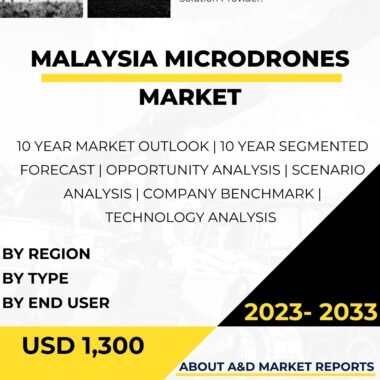Description
Microdrones, also known as small unmanned aerial vehicles (UAVs) or drones, are lightweight, portable, and versatile aerial platforms. These unmanned systems have gained significant attention in recent years due to their numerous applications across various industries, including agriculture, mapping, surveying, environmental monitoring, infrastructure inspection, and public safety.
In the Netherlands, microdrones play a crucial role in addressing challenges and enhancing efficiency in diverse sectors. The Dutch market for microdrones has witnessed substantial growth as these compact and agile systems offer a cost-effective and accessible solution for data collection and analysis.
One of the primary applications of microdrones in the Netherlands is in agriculture. Farmers and agricultural businesses employ microdrones equipped with specialized sensors and cameras to monitor crops, assess plant health, and detect potential issues such as pests, diseases, or irrigation problems. The aerial data collected by microdrones provides valuable insights for precision agriculture, enabling farmers to make data-driven decisions that optimize crop yields, reduce inputs, and improve overall farm productivity.
Moreover, the Netherlands Microdrones market addresses the requirements of surveying and mapping applications. Microdrones equipped with high-resolution cameras, LiDAR (Light Detection and Ranging) sensors, and photogrammetry capabilities are used for land surveying, urban planning, and infrastructure mapping. These microdrones offer a rapid and cost-effective solution for creating accurate and detailed topographic maps, 3D models, and orthomosaics.
Additionally, microdrones are utilized for environmental monitoring and conservation efforts in the Netherlands. Environmental organizations and researchers employ microdrones to conduct aerial surveys of wildlife habitats, track animal populations, and assess changes in ecosystems over time. The non-intrusive nature of microdrones allows for minimal disturbance to sensitive environments, making them valuable tools for biodiversity monitoring and conservation initiatives.
Furthermore, the Netherlands’ dedication to innovation is evident in the development and integration of advanced microdrone technologies. The Dutch technology industry actively collaborates with research institutions, government agencies, and international partners to explore advancements in microdrone capabilities, such as longer flight endurance, improved sensor payloads, and autonomous navigation. These collaborations drive improvements in microdrone performance, data accuracy, and safety features, positioning the Netherlands at the forefront of UAS technology adoption.
The commercial sector in the Netherlands also benefits from microdrones, with applications in infrastructure inspection and public safety. Microdrones equipped with high-definition cameras and thermal imaging sensors are used to inspect bridges, buildings, and industrial structures, allowing for efficient and comprehensive assessments of infrastructure health and safety. Additionally, microdrones are employed in search and rescue operations, providing first responders with real-time aerial views of disaster-affected areas and aiding in locating missing persons.
The export potential of the Netherlands Microdrones market is also significant. The country’s reputation for high-quality technology and its expertise in unmanned aerial systems have generated interest from other nations seeking to enhance their own capabilities in various industries. Exporting microdrones not only supports the Dutch technology industry but also fosters international cooperation and strengthens trade relationships with partner countries.
Challenges in the Netherlands Microdrones market include the need to address evolving regulations and safety concerns. As the use of microdrones becomes more widespread, the Dutch government must develop and adapt regulations that balance innovation with safety and privacy considerations.
Additionally, the Netherlands Microdrones market must focus on the development of robust training and education programs for drone operators. Effective training is crucial for maximizing the benefits of microdrones and ensuring safe and responsible use in various applications.
Furthermore, the Netherlands Microdrones market must consider the challenge of resource optimization and cost competitiveness. As microdrones incorporate sophisticated technology and require investments in research and development, ensuring cost-effectiveness and efficient use of resources is essential for maximizing their benefits and capabilities.
In conclusion, while there might not be publicly available specific data on a separate “Netherlands Microdrones Market,” the broader context of microdrones in the Netherlands is of paramount importance for enhancing efficiency and capabilities in various industries. Microdrones offer cost-effective and accessible solutions for data collection and analysis in agriculture, surveying, environmental monitoring, infrastructure inspection, and public safety. The Netherlands’ focus on microdrone technology and innovation demonstrates its dedication to providing the highest level of operational efficiency and effectiveness in various sectors. Collaborations with research institutions, export opportunities, and a dedication to innovation have positioned the Netherlands as a key player in the global Microdrones market. As the Dutch technology industry continues to invest in research and development, advancements in microdrone technologies will be essential to optimizing capabilities and maintaining the Netherlands’ leadership in the field.




